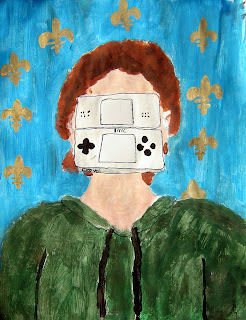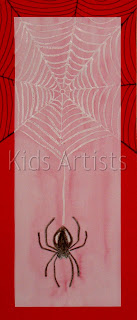Made by Nikki, 11 years old
Rene Magritte is born in 1898 in Belgium. When Magritte is 13 years old, his mother commits suicide. She jumps in the river Samber and is found with her dress covering her face. This image has been suggested as the source of several paintings from Magritte: people hiding their faces with several objects.
In 1924 Magritte became friends with members of a surrealism group in Brussels: André Breton, Joan Miró and Salvador Dalí. These artists influence Magritte's work. In the end Magritte became famous with surrealistic paintings.
Magritte gave his paintings a realistic effect of surrealism. He painted simple objects, like a shoe, an apple, a pipe or a tree. Magritte took these things out of their ordinary environment and placed them in a special surrounding.
One of Magritte's most famous works is "La Trahison des Images" (The Treachery of Images). This is a very realistic painting from a pipe, with the text: Ceci n'est pas une pipe (This is not a pipe). The painting is not a pipe, but rather an image of a pipe. As Magritte himself commented: "The famous pipe. How people reproached me for it! And yet, could you stuff my pipe? No, it's just a representation, is it not? So if I had written on my picture 'This is a pipe,' I'd have been lying!"
By putting us constantly on the wrong track, Magritte forces us to think about art. Magritte thought it the task of an artist to place reality in a different context.
Nikki working on her version of Magritte
You need:- drawing sheets A3 size
- brushes and water containers
- old newspapers
- tempera paint
- (black markers)
Made by Kiki, 11 years old
Children sketch a portrait, just like Magritte did. It doesn't have to be someone special, just a person. Instead of an apple, they choose a present-day object to cover the face. This object has to be about as large as a face, so a piano or a coin can't be used! Options: an Ipod, cell phone, candy or something. When sketching is finished, the drawing has to be painted. When necessary, students can outline the covering object with a fineliner.
Made by Jetse, 12 years old



































.jpg)







